Imagine waking up to the enticing aroma of freshly baked Sourdough Cinnamon Rolls, their golden-brown swirls peeking through a generous layer of frosting. These aren't just any cinnamon rolls, though—they're the best old-fashioned sourdough cinnamon rolls you've ever had!
Combining the tangy goodness of potato flake sourdough starter with the comforting warmness of cinnamon, these old-fashioned sourdough cinnamon rolls are the epitome of home-baked perfection. Get ready to embark on a mouthwatering journey as we unravel the secrets behind this timeless recipe that will leave you craving for more.
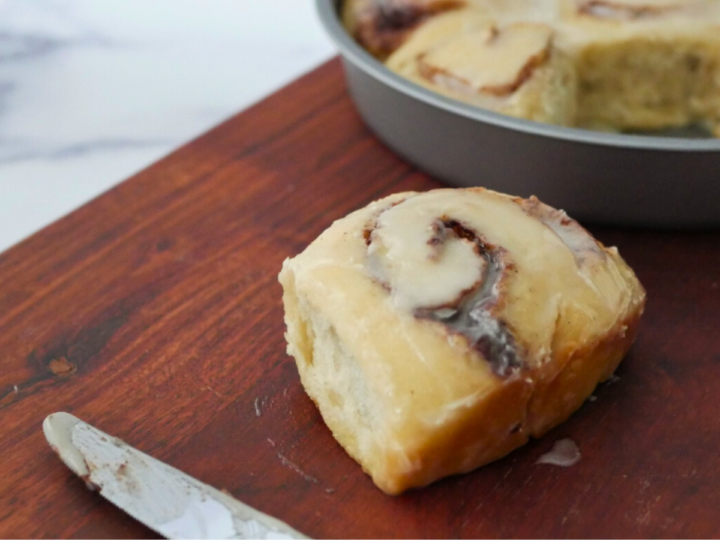
So roll up your sleeves, dust your countertops with flour, and let's dive into the art of creating the best sourdough cinnamon rolls you've ever tasted!
What Makes These Sourdough Cinnamon Rolls Different?
- Sourdough: To start with, most cinnamon rolls are yeast rolls. They use baker's yeast to help the bread rise. My recipe uses a sourdough starter instead of active dry yeast. Both are technically yeast, one is a commercial yeast versus a more natural working yeast in the sourdough starter
- Sourdough Starter: The sourdough starter we are using for this recipe is made from Potato Flakes. This is different than the more traditional sourdough starter that uses just flour and water, the potato flake starter uses potato flakes to "feed" the starter. This starter is sweeter, and less sour than a traditional starter.
- Soft, Tender, Fluffy, and Slightly Sour: The flavor of these Sourdough Cinnamon Rolls is soft and tender, with a less sour or tangy flavor than traditional sourdough cinnamon rolls. Combine that with the richness of the butter, the sweetness of the sugar, and the warmth of the cinnamon, you have a treat that you will love.
No doubt you will love these fluffy sourdough cinnamon rolls!
What is Sourdough Bread?
Since we mentioned Sourdough above, we thought you might be curious about what Sourdough Bread is. Sourdough Bread is made from a natural leavening agent. The leavening agent, which is yeast, is fermented which gives the bread its sour or tangy flavor. The yeast is a natural yeast vs. a commercial yeast like you would buy in the store to make yeast bread.
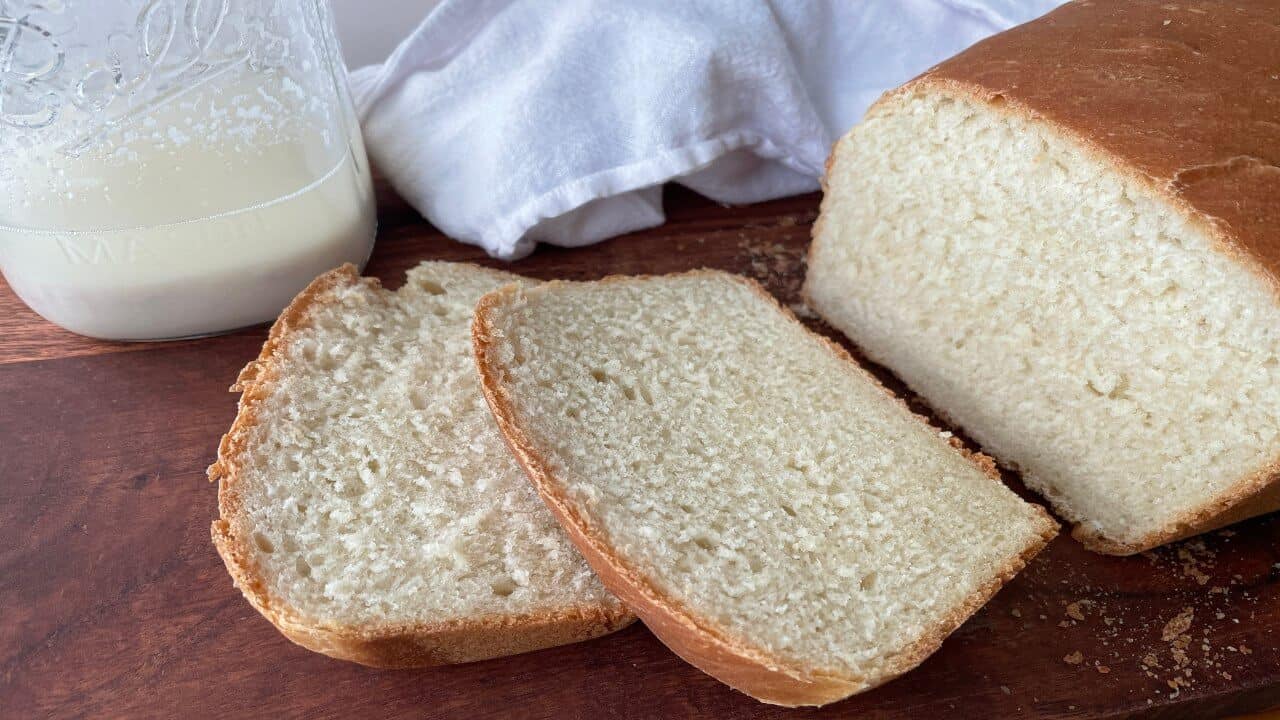
This is also why sourdough bread is a healthier option because the fermented starter is full of probiotics, natural wild yeasts, and good bacteria. Traditional sourdough starters use flour and water to ferment. Wild yeasts and bacteria grow on this and this is what causes the bread to rise.
In this case, we are using an easy-to-make sourdough bread using a potato flake starter which starts with a commercial yeast called active dry yeast to get it started, but then wild yeast takes over after it has fermented.
Before you Start
In order to make this recipe, you have to have a starter. If you do not have a starter or know how to make one, I have made that easy for you. Before you do anything else, go make this Easy to Make Sourdough Starter Using Potato Flakes.
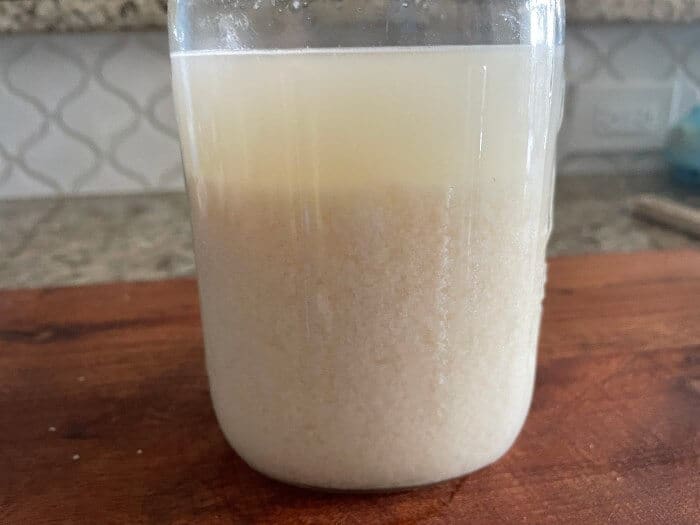
This starter is easy to make but it takes 5 days to make it so make sure you leave yourself enough time for that. Once you make It, it is also easy to maintain so you will always have it on hand when you want to make this recipe or others that use the starter.
Maintaining Your Starter
I wanted to touch on maintaining your sourdough starter. The starter is easy to maintain but you do have to feed it once every 5 days.
If you happen to not be able to feed it one week on the 5th day, don't fret, you can go a few days past this and it will be ok. Once you are able to get back on the schedule though, try to stick to it as it will keep your starter strong.
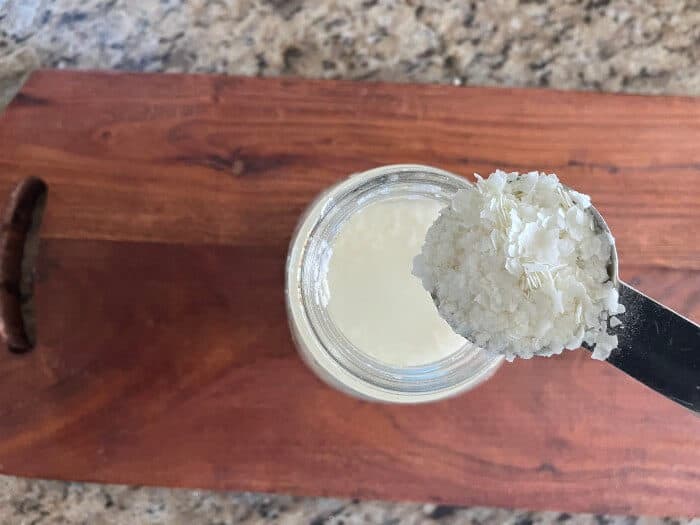
The above-mentioned post about how to make the starter will give you all the information on how to make and maintain the sourdough starter.
There are also many other recipes that you can use this starter for such as this Easy to Make Sourdough Bread Using a Potato Flake Starter. So it is a good idea to keep a starter on hand.
To Start, Feed The Starter
Once you have the starter made, we can continue in the process. The very first thing you have to do is feed the starter unless your starter is brand new. If you just made the starter and are on the fifth day, you are ready to make your cinnamon buns.
If you need to feed the starter, once you have fed it, you will wait 6 to 8 hours for the starter to come up to room temperature and ferment. Then you will be ready to make your cinnamon rolls.
How to Make Cinnamon Buns
Making Old Fashioned Sourdough Cinnamon Rolls is easy if you have the right recipe and tips. It does take a little prep time though. Here is how to do it:
Dough Ingredients:
Active Starter
This recipe calls for 1 cup of active sourdough starter that is made from potato flakes.
Warm Water
You will need 1 ½ cups of water that is lukewarm. This should have a temperature range of 95 to 115 degrees Fahrenheit. I like to use my instant-read thermometer to check the temperature.
Salt
Try to use sea salt or Kosher salt if you can. Normal table salt has iodine in it and can give an off-taste. You will need 1 ½ teaspoons of salt
Sugar
You will need ½ cup of White Granulated Sugar. I often use organic cane sugar if I have it on hand. You can also use brown sugar for a richer flavor.
Vegetable Oil
You will need ½ cup of Vegetable oil. I typically use canola or corn oil. I have used Olive oil in the past with great results. If you use olive oil, make sure it is a Light Extra Virgin Olive oil, something with a light taste.
Flour
In order to make this recipe, you will need either bread flour or all-purpose flour. I like to use unbleached all-purpose flour when I make my bread. Bread flour is excellent to use as well.
Bread flour will give a little more structure to the bread because it has a slightly higher protein count than all-purpose flour. Most people have all-purpose on hand so that is why I recommend going with it. Any brand will do but I tend to like King Arthur flour. You will need 6 cups of flour
For the Filling:
Butter
9 tablespoons of softened butter. You want it soft enough to spread.
Sugar
1 cup of sugar. I use white sugar for this recipe but you could also use brown sugar or Turbinado Sugar.
Cinnamon
8 teaspoons of ground cinnamon.
For the Icing
Powder sugar
2 cups of powdered sugar or you may know it as confectioners sugar.
Butter
2 tablespoons of softened butter.
Vanilla
2 teaspoons of vanilla extract.
Milk
¼ cup of milk or heavy cream.
Making the Bread:
Step 1: In a large bowl, add 1 ½ cups of lukewarm water. Then add in 1 cup of starter and ½ cup of vegetable oil.
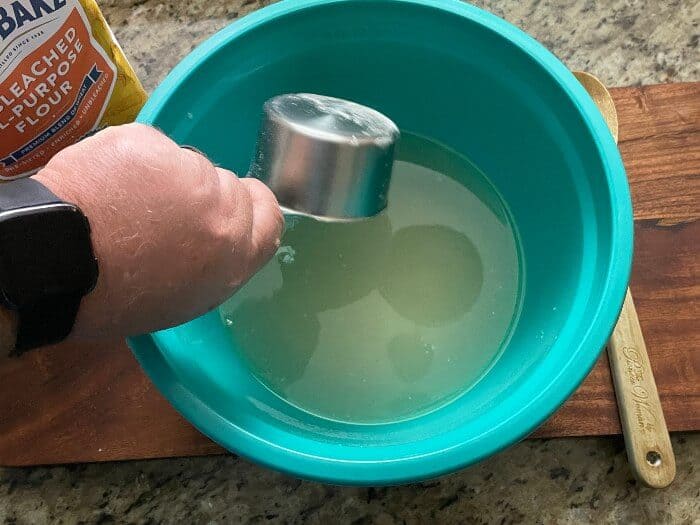
Step 2: Next, add the sugar and salt. Mix to dissolve the sugar and salt in the mixture.
Step 3: Add in the 6 cups of flour.
Mix
Step 4: Mix until all the flour has been incorporated making sure to scrape the sides of the bowl until a ball is starting to form.
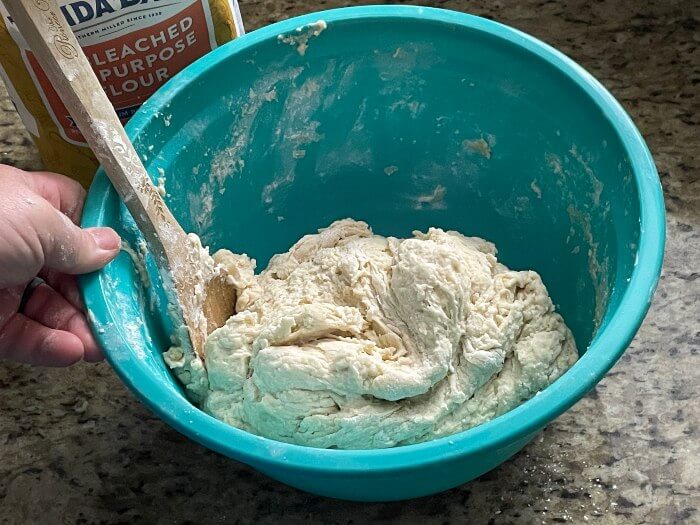
Step 5: Turn the ball of dough out onto a floured work surface. If you have a pastry mat, that works well too.
Knead The Dough
Step 6: Knead until you have a slightly smooth dough ball formed. It should be a little sticky but not too sticky. If you have a stand mixer, use the dough hook attachment and this will make light work out of this step.
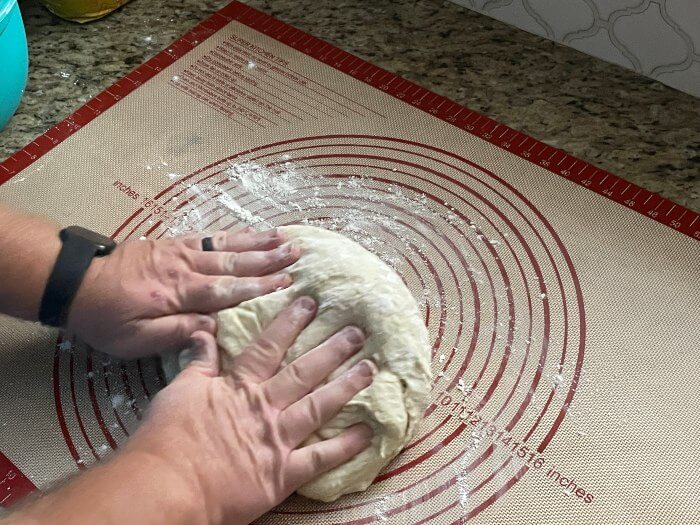
Let The Dough Rise
Step 7: Place the ball into a clean bowl. I like to add a little vegetable oil or olive oil to the ball and smear it around. This helps to prevent the dough from sticking to the bowl. I also like to put a little bit of oil on top of the dough to keep it from drying out.
Step 8: Cover the bowl with plastic wrap, a tea towel, or Cheesecloth. You could also use parchment paper to cover it as well. Place in a warm spot to let the dough rise for the first time. The rise time will vary but I let mine go overnight. Typically you want to a least let it double in size which should take 4 to 8 hours
Roll The Dough Out
Step 9: The next day or after the dough has doubled in size, punch the dough down, then turn it out onto a floured surface again.
Step 10: Knead for several minutes, then divide the dough into three equal parts.
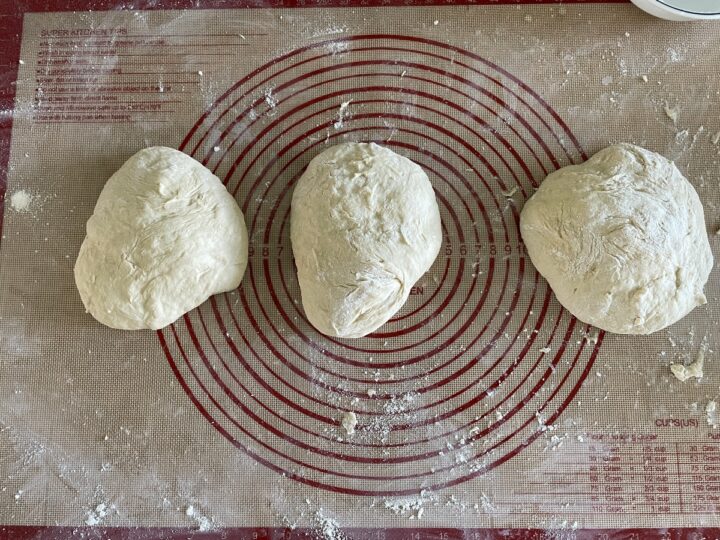
Assemble The Rolls
Step 11: Working with one section of dough at a time, sprinkle a little flour on your working surface. Also, rub some flour on a rolling pin. Pat your dough into a rectangular shape. and start to roll out the dough. You want to form a large rectangle that is approximal 9 x 13 inches.


Step 12: In a small bowl, mix the sugar and cinnamon together. Then spread softened butter on the entire surface of the dough using a basting brush. Spread a thin layer of the cinnamon sugar mixture on top of the softened butter. Make sure to save enough butter and cinnamon/sugar mixture to use on the other two sections. If need be, you can divide the ingredients into thirds.


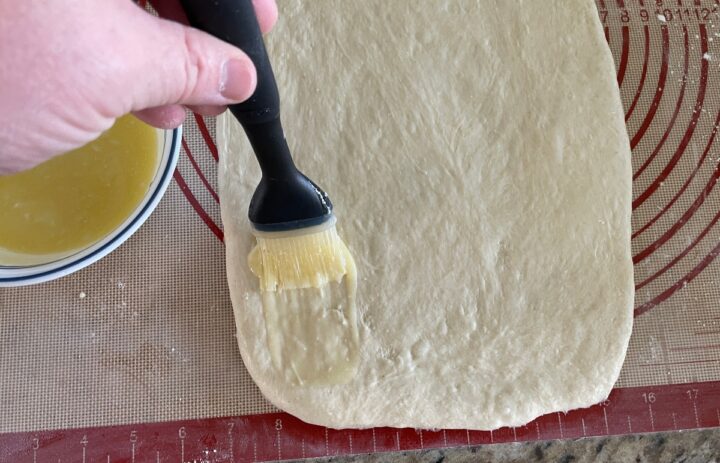

Step 13. Starting with the long side of the dough (13-inch side) use your thumbs to pick up the dough across the entire edge and start to roll the dough evenly as possible. Try to roll it up as tight as you can.
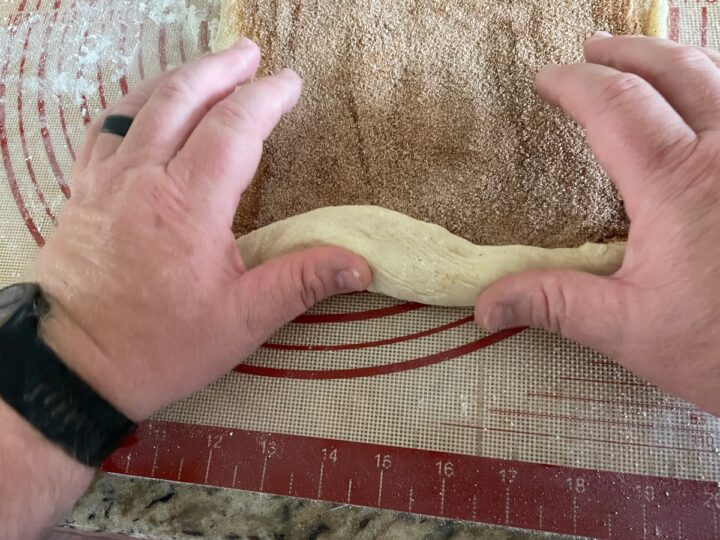
Pro Tip: I found that I could my bench scraper to pick up on the edges and use it to help roll the dough. This worked great for helping the dough to start rolling and to help roll it as I went along.
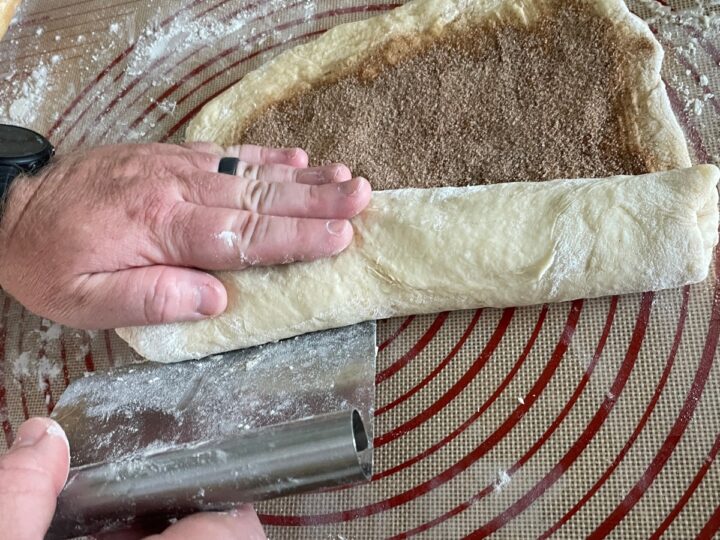
Cut The Rolls
Step 14: Using your bench scrapper, sharp knife, or even dental floss, cut the roll into 2 to 3-inch rolls. Place the rolls in a greased round baking pan. Place the first one in the middle, then place each additional roll around it in a circle.
Let the Rolls Rise Again
Step 15: Place the pans in a warm spot in your kitchen, cover them with plastic wrap or a damp towel, and let rise for the final rise until the rolls have doubled in size.
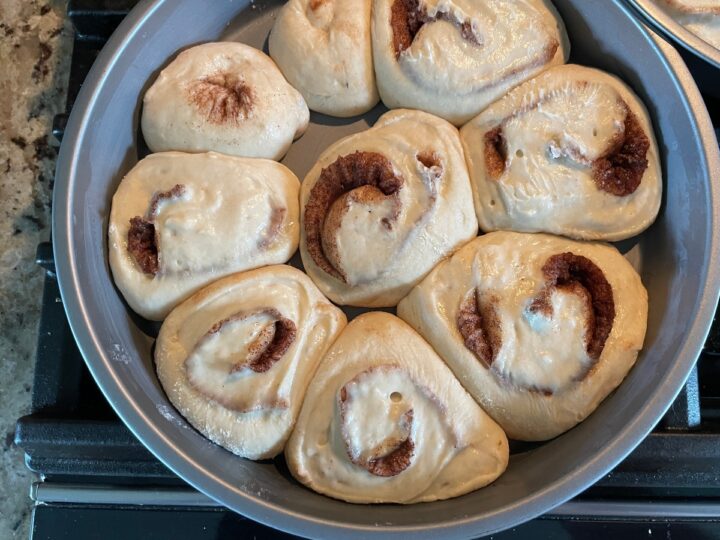
Bake The Rolls
Step 16: Bake in the oven at 350 degrees Fahrenheit for about 22 to 25 minutes or until the rolls are golden brown.
Making the Icing:
While the cinnamon rolls are baking in the oven, now is the time to mix up the icing.
Step 1: Add the powdered sugar, melted butter, vanilla extract, and milk to a small to medium-sized mixing bowl.

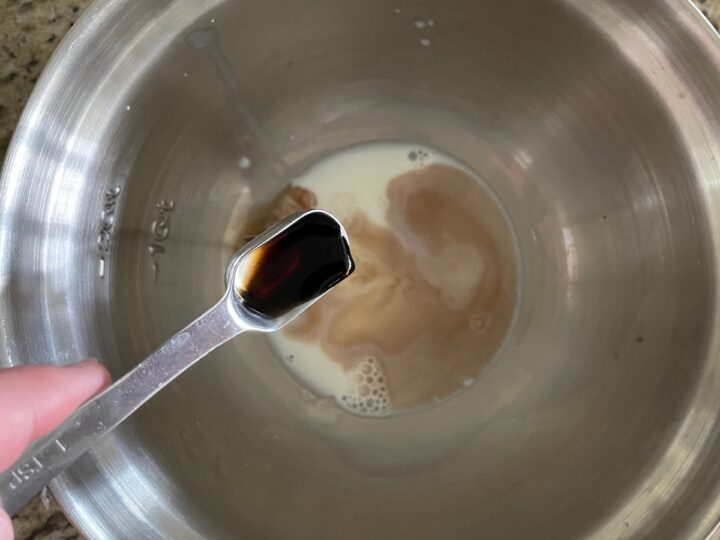
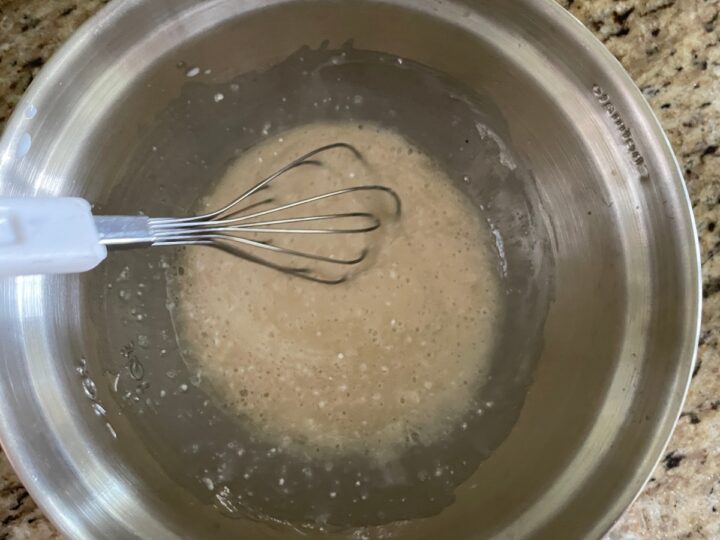
Step 2: Next mix until it is smooth.

Step 3: Pour over warm cinnamon rolls and spread evenly.
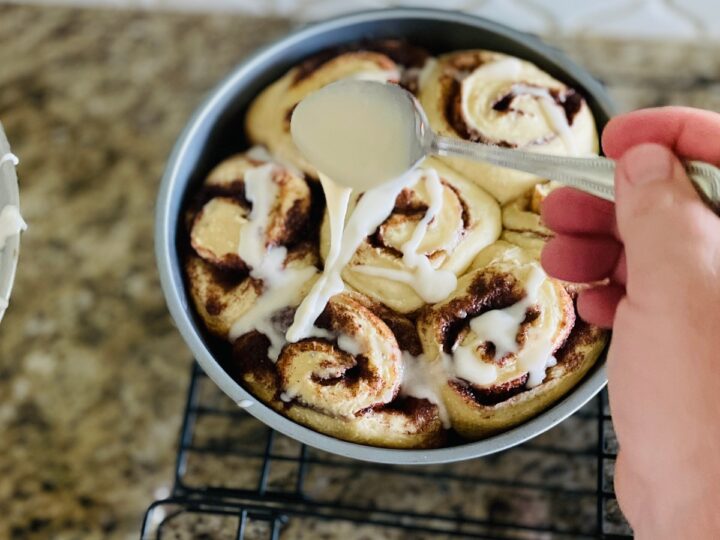
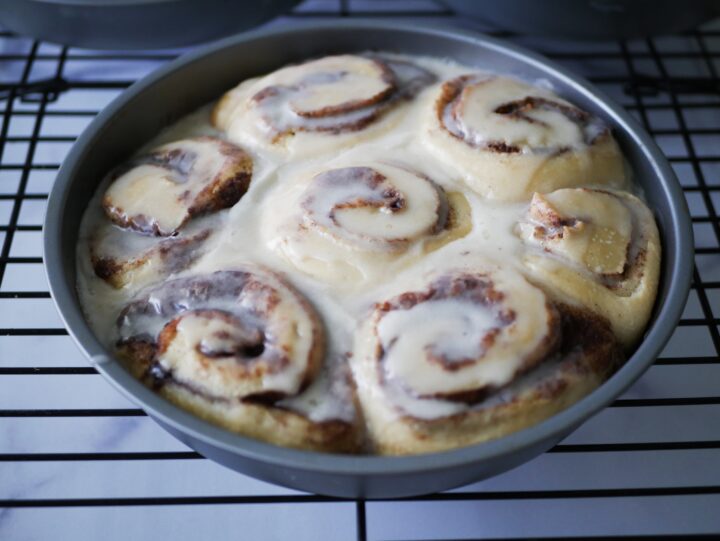
Serve
Once you have put the icing on, it is time to serve the Sourdough Cinnamon rolls. Break a roll apart and place it on a dish to serve.
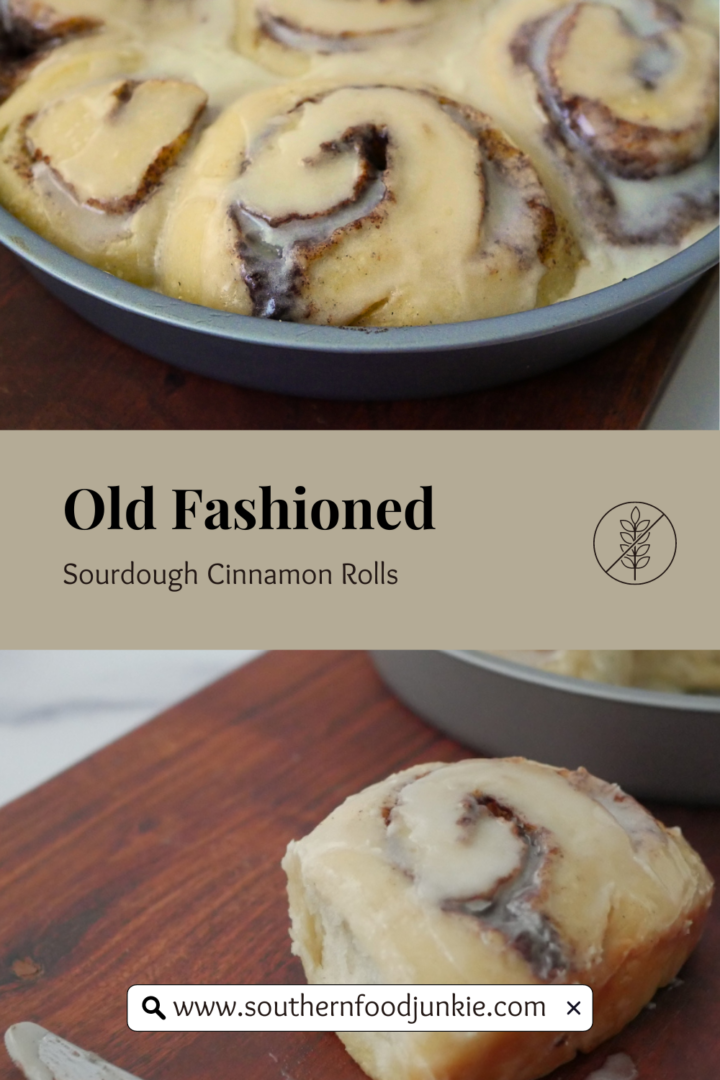
Conclusion
In conclusion, these sourdough cinnamon rolls made from a potato flake starter offer a delightful fusion of tangy sourdough goodness and the comforting sweetness of cinnamon and sugar. The unique twist of using a potato flake starter not only adds a distinct flavor but also enhances the texture, making them irresistibly soft and pillowy.
Whether enjoyed as a special breakfast treat or a delightful dessert, these sourdough cinnamon rolls are a testament to the creativity and versatility of sourdough baking. They're sure to satisfy your cravings and leave you with a warm, homemade taste that lingers in your memory. So, roll up your sleeves, bake a batch, and relish in the joy of homemade sourdough cinnamon rolls that are truly a labor of love.
-Ronnie | Let's Get Food Junked
Thanks for stopping by Southern Food Junkie. It is our hope that you enjoy this recipe sharing it with friends, family, and coworkers. Make sure to take time to give thanks to the creator, God, by which all blessings flow.
John 6:35
FAQ's
If you have leftovers, place them in an airtight container and put them in the refrigerator. They will last up to 3 to 4 days.
Yes, an alternative frosting to use is Cream Cheese Frosting. You will use the same ingredients as above except to omit the milk and add in one 8 oz. package of room-temperature cream cheese. Mix until smooth and spread on the rolls once they have cooled to room temperature.
Yes, if you prefer to make these cinnamon rolls in a cast iron skillet versus the round baking pans, you can do that. Just note that this recipe makes 36 rolls so you will have to have 3 cast iron pans, or not bake them all at one time.
Yes, you can freeze baked cinnamon rolls if they have not been frosted. Line them on a baking sheet and stick them in the freezer until they are frozen. Then remove them and place them in an airtight container or freezer-safe zip lock bag to store for up to 6 months.
The Best Old Fashioned Sourdough Cinnamon Rolls
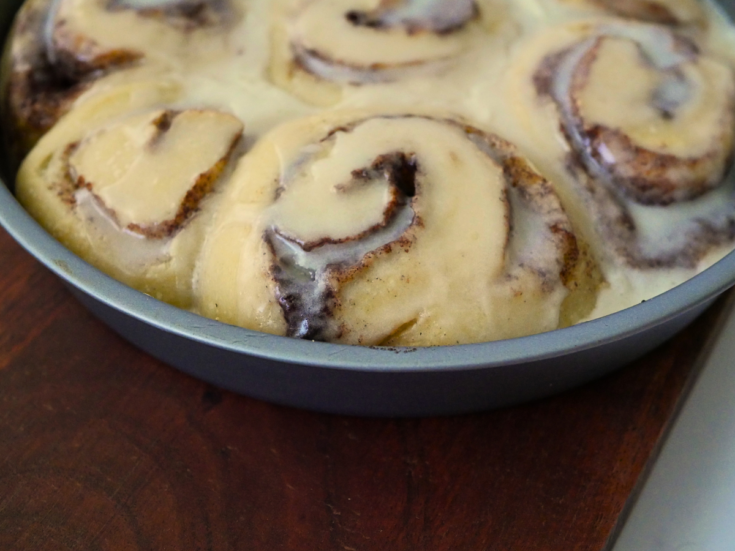
Imagine waking up to the enticing aroma of freshly baked Sourdough Cinnamon Rolls, their golden-brown swirls peeking through a generous layer of frosting. These aren’t just any cinnamon rolls, though—they’re the best old fashioned sourdough cinnamon rolls you’ve ever had!
Ingredients
Dough Ingredients
- 1 cup of active starter
- 1 ½ cups of luke warm water
- 1 ½ teaspoons of salt
- ½ cup of sugar
- ½ cup of vegetable oil
- 6 cups of flour
For the Filling
- 9 tablespoons of softened butter
- 1 cup of sugar
- 8 teaspoons of cinnamon
For the Icing
- 2 cups of powdered sugar
- 2 tablespoons of softened butter
- 2 teaspoons of vanilla extract
- ¼ cup of milk or heavy cream
Instructions
Making the Bread
- Step 1: In a large bowl, add 1 ½ cups of lukewarm water. Then add in 1 cup of starter and ½ cup of vegetable oil.
- Step 2: Next, add the sugar and salt. Mix to dissolve the sugar and salt in the mixture.
- Step 3: Add in the 6 cups of flour.
Mix
- Step 4: Mix until all the flour has been incorporated making sure to scrape the sides of the bowl and a ball is starting to form.
- Step 5: Turn the ball of dough out onto a floured work surface. If you have a pastry mat, that works well too.
Knead the Dough
- Step 6: Knead until you have a slightly smooth dough ball formed. It should be a little sticky but not too sticky. If you have a stand mixer, use the dough hook attachment and this will make light work out of this step.
Let the Dough Rise
- Step 7: Place the ball into a clean bowl. I like to add a little vegetable oil or olive oil to the ball and smear it around. This helps to prevent the dough from sticking to the bowl. I also like to put a little bit of oil on top of the dough to keep it from drying out.
- Step 8: Cover the bowl with plastic wrap, a tea towel, or Cheesecloth. You could also use parchment paper to cover it as well. Place in a warm spot to let the dough rise for the first rise. The rise time will vary but I let mine go overnight. Typically you want to a least let it double in size which should take 4 to 8 hours
Roll the Dough Out
- Step 9: The next day or after the dough has doubled in size, punch the dough down, then turn it out onto a floured surface again.
- Step 10: Knead for several minutes, then divide the dough into three equal parts.
Assemble the Rolls
- Step 11: Working with one section of dough at a time, sprinkle a little flour on your working surface. Also rub some flour on a rolling pin. Pat your dough into a rectangular shape. and start to roll out the dough. You want to form a large rectangle that is approximal 9 x 13 inches.
- Step 12: In a small bowl, mix the sugar and cinnamon together. Then spread soften butter on on the entire surface of the dough using a basting brush. Spread a thin layer of the cinnamon sugar mixture on top of the soften butter. Make sure to save enough butter and Cinnamon/sugar mixture to use on the other two sections. If need be, you can divide the ingredients into thirds.
- Step 13. Starting with the long side of the dough (13 inch side) use your thumbs to pick up the dough across the entire edge and start to roll the dough evenly as possible. Try to roll it up as tight as you can.
Cut the Rolls
- Step 14: Using your bench scrapper, sharp knife, or even dental floss, cut the roll into 2 to 3 inch rolls. Place the rolls in a greased round baking pan. Place the first one in the middle, then place each additional roll around it in a circle.
Let the Rolls Rise Again
- Step 15: Place the pans in a warm spot in your kitchen, cover with plastic wrap or damp towel and let rise for the final rise until the rolls have double in size.
Bake the Rolls
- Step 16: Bake in the oven at 350 degrees Fahrenheit for about 22 to 25 minutes or until the rolls are golden brown.
Making the Icing
- While the cinnamon rolls are baking in the oven, now is the time to mix up the icing.
- Step 1: Add the powdered sugar, melted butter, vanilla extract, and milk to a small to medium size mixing bowl.
- Step 2: Next mix until it is smooth.
- Step 3: Pour over warm cinnamon rolls and spread evenly.

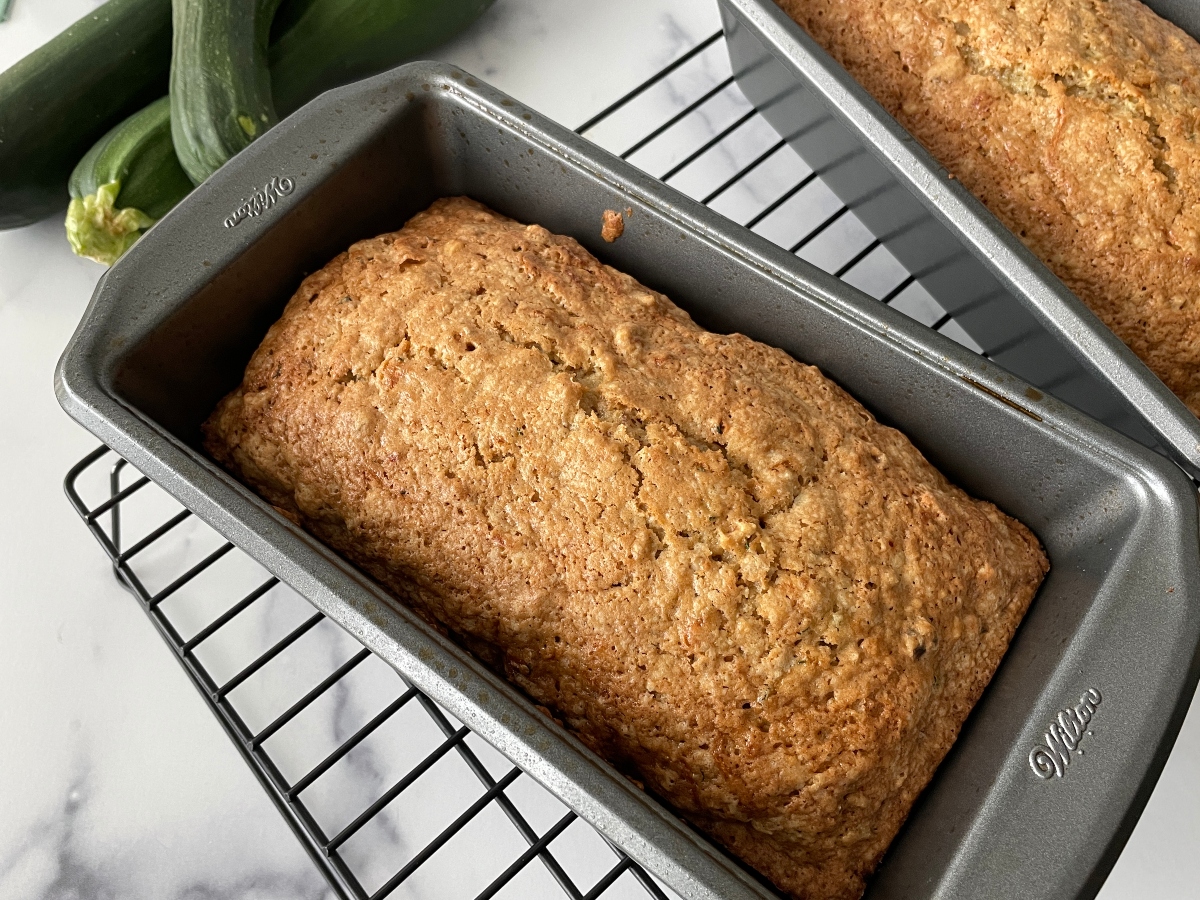
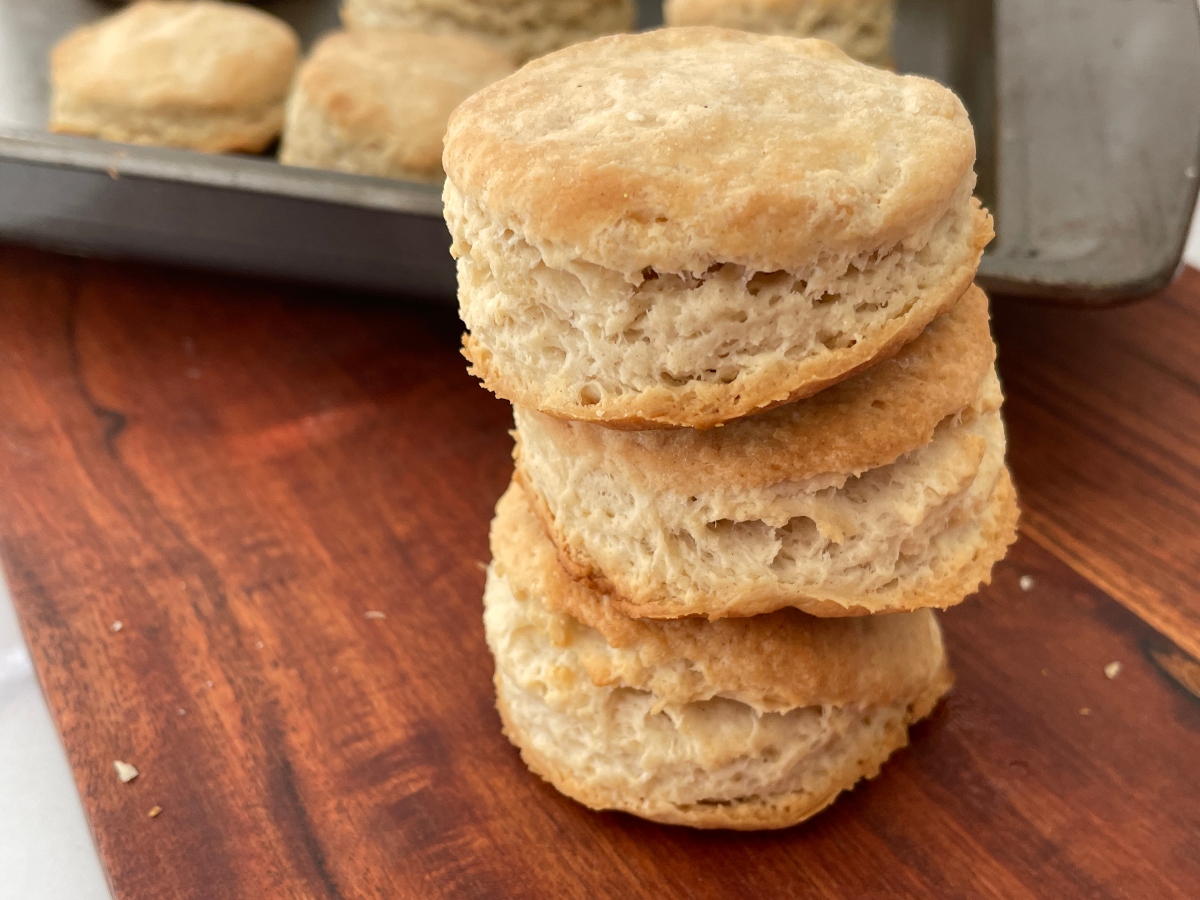
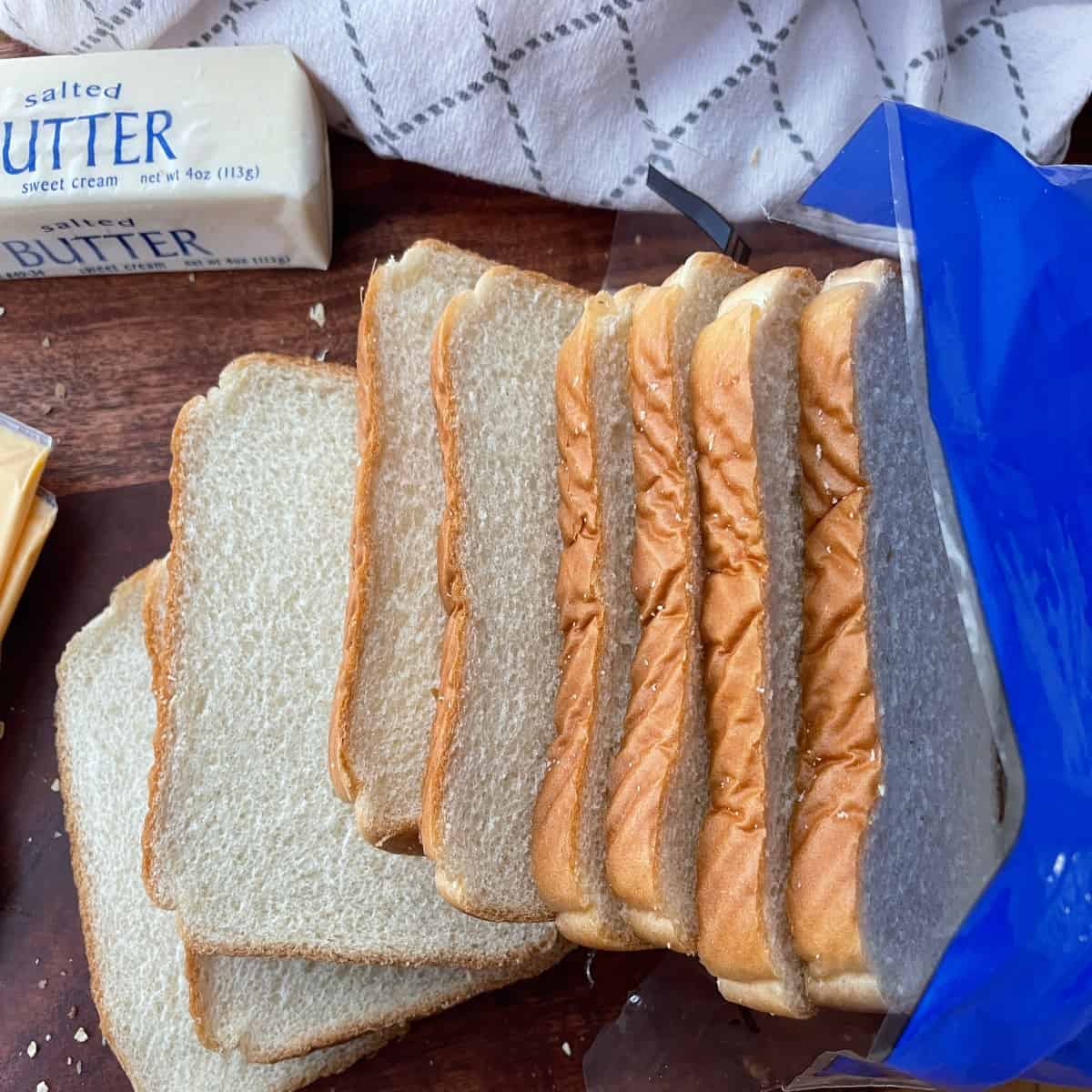
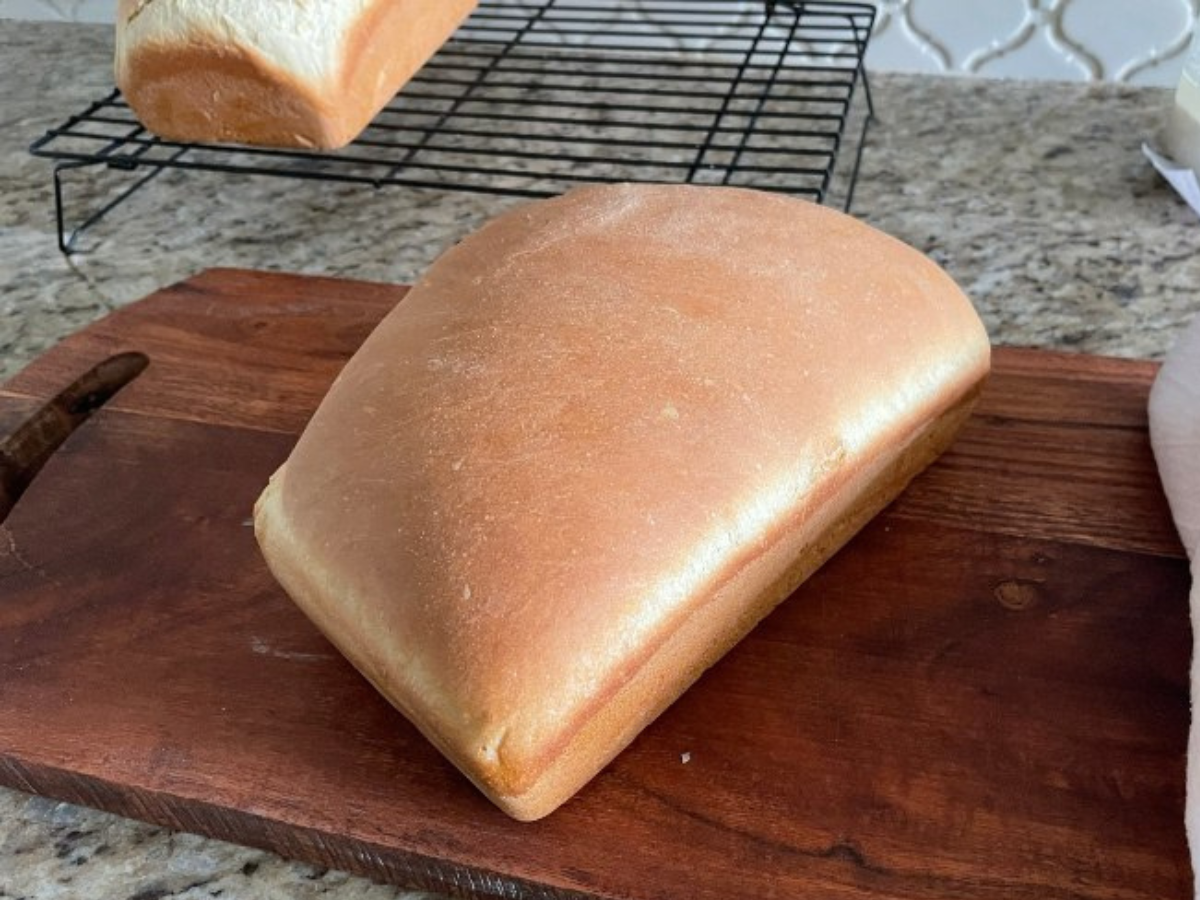
Marian says
I have been looking for recipes using the potato flake starter since starting on my sourdough journey. This is the best one I have found. The whole family loved this one looking forward to more recipes.
Ronnie Williams says
Hey Marian,
I am so glad to hear that your whole family approved. Have you seen our Sourdough Cinnamon Rolls made from this Sourdough Potato Flake Starter? If not, check them out here: https://southernfoodjunkie.com/sourdough-cinnamon-rolls/. They are one of my families favorites! Thanks for your wonderful comment.
-Ronnie
Marilyn Sachitano says
My dough is so sticky after I mix everything together. I’ve been adding more flour just to be able to handle it, is this normal? I used this same recipe 30 years ago and I’m so glad to be able to bake it again!
Thank you.
Ronnie Williams says
Hey Marilyn,
Sometimes it can be a bit sticky. That means it is more hydrated. You can continue to add a little flour a little at a time until it gets where you can handle it.
I hope that helps.
Thanks,
Ronnie
Lisa says
Best sourdough cinnamon rolls EVER! They came out perfectly. Had to make a cream cheese frosting for the top and oolala. Melt in your mouth delicious! Thank you for sharing!!
Ronnie Williams says
Lisa,
Thanks so much for sharing. I really appreciate it. The cream cheese frosting is the best too. Next time I make these I am going to use that one as well.
Thanks again,
-Ronnie
Crystal says
New to sourdough and baking in general so this may seem silly. But about how long does the second rise generally take?
Ronnie Williams says
Hey Crystal,
I don't think that is a silly question at all. I normally do the first rise over night, then the second rise I would generally say around 4 hours.
Thanks,
-Ronnie
Renee says
The recipe says discard cinnamon rolls, but you have to feed it first, is that the same thing? Discard is not just taking out 1 cup, it has to be fed then discarded?
Ronnie Williams says
Discard can be a tricky word. Basically I am referring to when you need to feed your starter but are not wanting to make bread. Some people will feed the starter to keep the starter strong, but will discard the cup of starter after fermentation. Discard can also be a build up of the starter over time where you end up with too much in your container and need to get rid of some before feeding it. You would let it sit out, then make something with it just as you would any other recipe. In this recipe, I am referring to the first one.
Thanks
Peggy says
these are wonderful, but am a bread/roll chicken so I add yeast to the starter.... they have turned out great.. Thank you for sharing your expertise & recipes...
I have a recipe question though; I hate to waste food, do you have recipes or could lead me in the right direction to find discard recipes??.... I have not had success finding recipes for potato flake starter.."discard" recipes...
any advice is appreciated
Ronnie Williams says
Yes, discard can be a tricky word as some refer to it as one thing and other refer to it as another. I refer to it as when you want or need to feed the starter, but don't want to make bread. Typically you would dump the starter if are not making bread. One way to deal with this is find someone that would love to have some starter and give it to them. Also, I have made pancakes with this starter before and they turned out wonderful. I don't have a recipe written down for it yet but I will try to get that soon.
Thanks,
Ronnie
Jeannie says
I made these this passed weekend and they were gone. I named my starter Jack Sparrow haha. It got me excited to try this dough for different things like pigs in a blanket and conchas.. I saved one 3 days later and it was STILL FLUFFY I couldn't believe it haha . Thank you for the share 🙏🏽
Ronnie Williams says
Good morning Jeannie,
I like that name haha. So funny. I am glad the liked it and I love the idea of Pigs in a blanket! I will have to try that myself. Especially with the Lit'l Smokies. That sounds wonderful.
Thanks,
Ronnie
Dani says
I’m excited to try this cinnamon roll recipe! Do you think I could make a half recipe instead of the full recipe?
Ronnie Williams says
Hey Dani,
I don't see why you could not try to make half of the recipe. Just divide the ingredients in half and use that amount.
Let me know how it turns out!
Thanks,
Ronnie
Tracey says
Hello! I want to make these for Christmas morning but don't want to get up in the middle of the night. If I make the day before and bake in the am will that work or is it ok for the second rise to be overnight? Thanks!
Ronnie Williams says
You should be able to do that. You can let the second rise be over night then bake first thing in the AM.